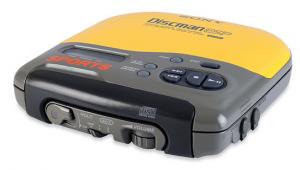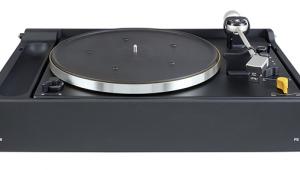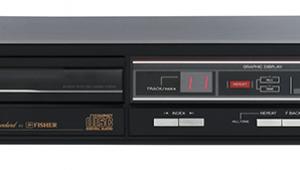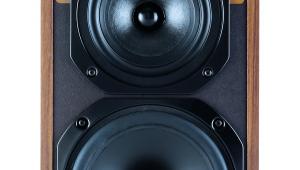Rogers Ravensbourne Stereo Page 2
Down The Line
All of the amplifier's line-level inputs have a standard sensitivity of 200mV and there are no active stages before the volume control. This means that modern sources such as CD players, outboard DACs and streamers will not overload the Ravensbourne, although some may limit the range of action of its volume control. The tape recording output is also not processed or attenuated, so a standard deck built to line-level standards will work correctly. A tape connector configured to DIN signal levels can be found on the amp's front panel - this was something of a Rogers trademark at the time.
Also on the front fascia is a button for an auxiliary input which has the same characteristics as the 'radio' and 'tape' inputs around the back. However, the connector is a non-standard 240o DIN type for which cables are no longer made, so if you are tempted to make your own then beware because a DC power output is also present at this socket. Furthermore, the headphone socket is also non-standard, being a (180o) 5-pin DIN type.

The loudspeaker outputs are presented on a strip of small screws of the type really intended for the internal wiring of larger pieces of equipment. Wiring them is therefore fiddly and short circuits must be avoided at all costs due to the DC-coupled output stage which, as with the Luxman L-30 amplifier [HFN Aug '23] and the B&O Beomaster 2000 receiver [HFN Dec '23], is only protected by a handful of fuses...
Rogers' early Ravensbourne models, including our sample, offered outputs for 4ohm and 8ohm/15ohm (nominal) loudspeakers. Normally the low-impedance output is the one to go for but that's not the case here. The direct amplifier output goes to the 8ohm/15ohm connection, while the 4ohm terminals are fed through a 1ohm resistor. Since this reduces both power and damping factor, and makes for greater variability in amplifier/speaker system response, it is best avoided if possible.
Easy Does It
The amp's built-in phono stage is suitable for MM cartridges and certain ceramic types (e.g. the Decca Deram) and offers four degrees of sensitivity selected by two push buttons at the rear. The stated levels are 2, 3, 50 and 75mV, the ideal setting being easily found by experimentation.

Other controls and features are typical of an amplifier of this era. What looks like the power switch actually cuts out the loudspeakers and selects the headphone socket instead; this important function is instead part of the volume control. As well as bass and treble there is a switchable top-cut filter which operates at either 6kHz or 9kHz. The slope of the filter can be varied from 20dB per octave to flat, the latter being the recommended setting. Either stereo channel can be replayed through both loudspeakers as well, which isn't that useful but, if you get the chance, do try it with Simon and Garfunkel's 'Wednesday Morning 3am'. Simon or Garfunkel, the choice is yours...
Whether a Ravensbourne comes on with a muted pop or a mighty crash through the loudspeakers depends on the state of balance in the output stages. Too much of the latter indicates that some workshop attention will soon be required. Even under ideal conditions it will take a few minutes to settle, then the few odd noises disappear and it begins to work properly.
Tim Listens
This is one of those amplifiers whose 'sound' is fairly easy to guess even before the click of the rotary on/volume knob. With the controls set correctly it is tonally fairly neutral and there is enough power to cover the bulk of everyday listening scenarios. Using the line-level inputs (all of which are the same), there is a small amount of hum and noise audible when sat close to the loudspeakers. This remains constant at all settings of the Ravensbourne's volume control but it is too subdued to be clearly perceptible from a normal listening distance.
What gives this vintage amplifier its character is a harmonically rich upper midband that sharpens up the sound a little; there's a definite edge to vocals and some types of percussion. The bass isn't perhaps as punchy as with the majority of DC-coupled designs - in fact I judged it to be slightly on the dry side. This is preferable, to my ears anyway, to the uncontrolled wallow of many a 1960s amplifier but it may not have impressed later buyers in 1975.

Elgar's 'Romance, Op 62', taken from Julian Lloyd Webber and John Lenehan's Cello Song, [Philips 434 917-2], gave a good impression of what the Rogers Ravensbourne is all about. There was a pleasing sense of realism to the strings which sounded solid and resonant, not wiry and grating as they sometimes can. Soundstaging, while lacking in absolute pinpoint accuracy, was at least broad and spacious, giving the easy feeling of a realistic musical experience. The only potential fly in the ointment was that to me the piano did not come across as quite as full bodied as I know it to be. There was a slight 'greyness' to tonal colours, and while this took away some of the instrument's weight, it did perhaps reveal some additional clarity in the way each note was played. Arguably, with this particular piece it was a trade-off rather than a failing.
Rock music challenged the Rogers amp to a greater extent. 'Easy Lover' by Phil Collins [Phil Collins ...Hits; Virgin CDV2870] could be played with gusto but at any level the percussion was recessed in the mix and failed to sparkle. Interestingly, bass weight was not an issue with this recording but the lack of higher-frequency impact robbed the music of some of its 'electricity'.
Yet, it is difficult not to like the Ravensbourne. It is a proper chunk of 1960s British hi-fi history that gives an authentic vintage experience without being burdensome to use or to own. To my ear the Leak Stereo 30 Plus just pips it on sound quality but the Ravensbourne is more versatile, better built and more attractively styled. You could always treat yourself to one of each!
Buying Secondhand
Odd it may be but the innovative output stage design of the Rogers Ravensbourne Stereo makes it robust and reasonably straightforward to repair. Any failure of the output transistors does not send a cascade of destruction back down through the lower levels of the amplifier's circuit; usually any damage is confined to blown fuses and a few burned out resistors. Setting up the Ravensbourne's output stage is tricky, however, and once made the adjustments still have a tendency to drift.
Despite this, component quality is good and it is not necessary to change whole handfuls of parts to get one of these half-century-old units back to operating at a decent standard. This, coupled with a high survival rate and moderate pricing, makes the Ravensbourne an ideal introduction to vintage hi-fi.
Hi-Fi News Verdict
The once popular Rogers Ravensbourne will bring back fond memories for many an audiophile and it isn't difficult to see why. Technically innovative, handsomely styled and well constructed, it is certainly a model to consider if you are looking for your first 1960s integrated amplifier. There are plenty about so there is also no need to consider anything but clean, original examples.


















































